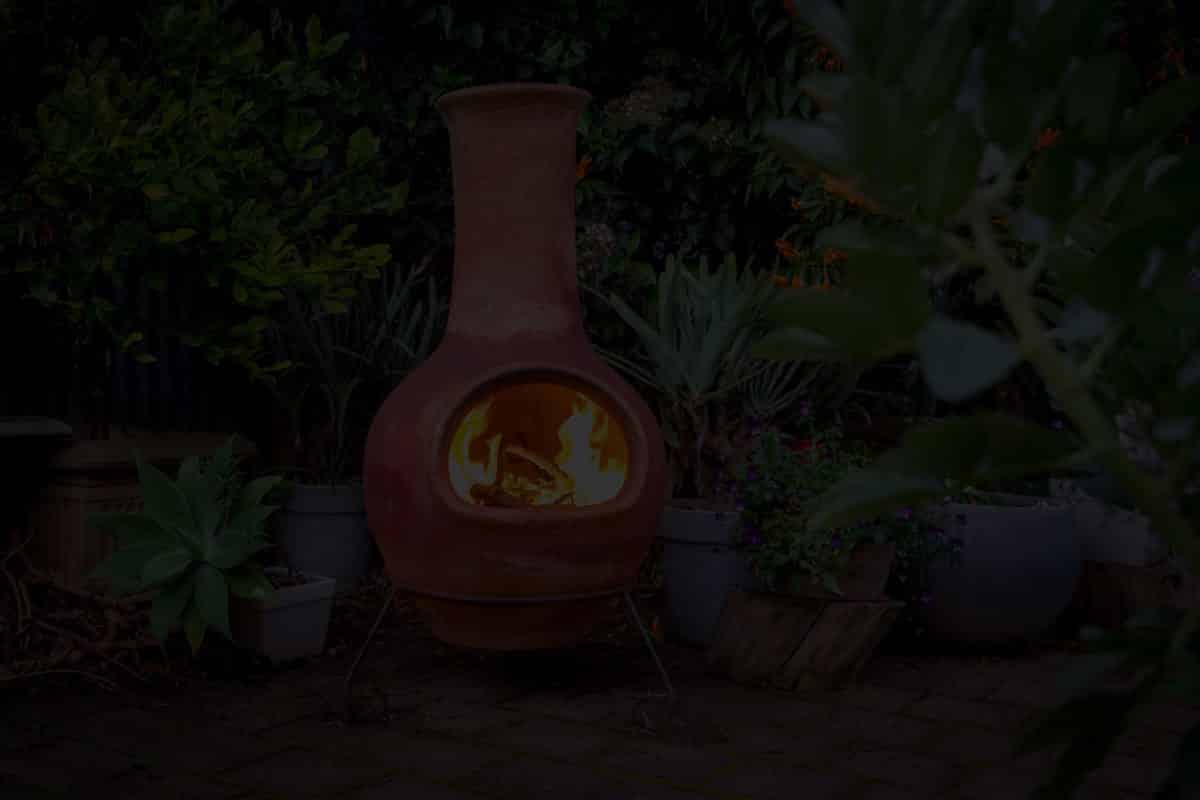Chiminea maintenance and care
How to Clean and Maintain Your Chiminea in Winter
The winter weather is your chiminea’s worst enemy. It’s easy enough to stash yours until spring, when things warm up again. But what if, like many of our customers, you fancy entertaining alfresco throughout the winter, weather be damned? Here’s how to clean and maintain your chiminea in winter, our simple guide to winter chiminea maintenance.
Winter chiminea maintenance
Rain, snow, ice and freezing temperatures can all affect how long your chiminea lasts. Clay chims absorb water which, when it freezes, cracks the clay. Cast iron chims are prone to rust. The easiest way to protect both kinds is to stash them indoors out of the winter weather.
Moving a chiminea indoors is easy enough as long as you remember a few key things:
- Cast iron chimineas are heavy so watch your back, and grab a friend or family member to help you lift it safely
- Clay chimineas are delicate, so lift it carefully by the body, never by the neck. Two lifters are always better than one
Whatever yours is made from, never store a chim on its stand. Never store a clay chim directly on the ground either, even indoors. Put it on a flat wooden base to keep it off the ground and let the air circulate – an old pallet will do
Always remove all the ash and dust before storing your chim, whether it’s cast iron or clay. Brush the interior walls of the body and chimney to get rid of dirt, dust and soot, and vacuum the bottom. Make sure it’s good and dry. Stand a pot of cat litter inside to naturally soak up excess moisture. And cover it with a special chiminea cover.
Protecting a clay chiminea outdoors in winter
If you don’t have storage space indoors or want to use your chiminea throughout the winter, it makes sense to seal a clay chim to weatherproof it. The waxy sealant fills the tiny pores and little hairline cracks you get in clay, so water can’t soak into it so easily. You only need to do this once, when you first buy the chim or before the first winter.
The drier it is, the better condition your chim will be in. Keep the rain lid on the chimney. If your chim didn’t come with a lid, you can always up-end a bucket over the chimney top to stop stray water getting into the body.
It makes sense to clean the ashes out after every use, so they don’t get damp and soggy. Covering your chiminea once it’s 100% dry will help repel moisture, dirt and dust, so buy a specially designed chim cover. Alternatively use a tarp, but bear in mind it won’t be a snug fit.
A clay chim can also suffer if it gets damp before you use it. The moisture it absorbs can turn to steam when you light up, which causes stress cracks. If your clay chim has got very wet, it’s best not to light it at all but put it indoors or in a shed or garage and let it dry naturally for a few days. While you can slowly, carefully dry it out by lighting a series of small fires to gradually drive the moisture off, it’s risky and you need to take great care.
Protecting a cast iron chiminea outdoors in winter
Metal chimineas rust. If you’re leaving yours outdoors for the winter, dry it completely after every use and invest in a proper, close-fitting chiminea cover that’ll stay put even in a high wind. Our chiminea covers look very smart.
Good cast iron chimineas come pre-coated with a fire-resistant finish or paint. But rust can still form when you leave a chim out over the winter. You can reduce the risk of rust by curing your chim, lighting a small fire inside, burning it for an hour then lighting a bigger fire using larger chunks of wood. Let your big fire roar for an hour, let it cool and you’ve added an extra measure of rust-proofing.
It also helps to re-paint rusty areas before winter sets in, so they can’t get any worse. We sell special cast iron paint for the purpose. All you need to do is wire wool the rust off, rinse and dry the surface then re-paint it. You can re-do it again at the start of spring to keep your chim in good nick all year long.
Now you know exactly how to achieve good winter chiminea maintenance. We’ll see you in December for our pre-festive season countdown…

